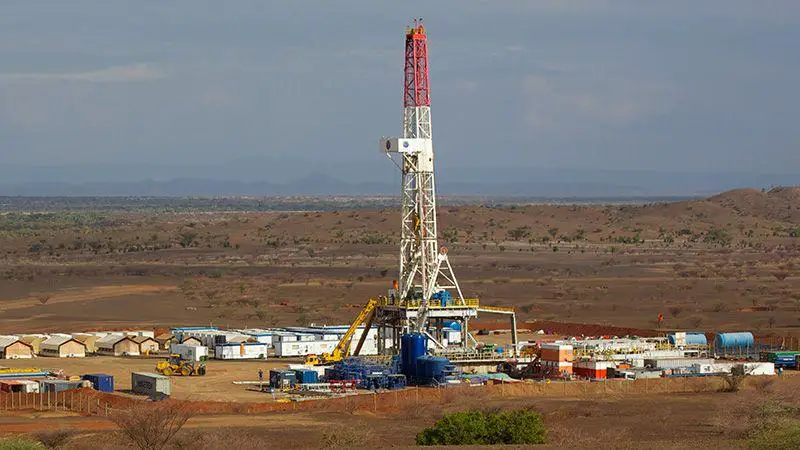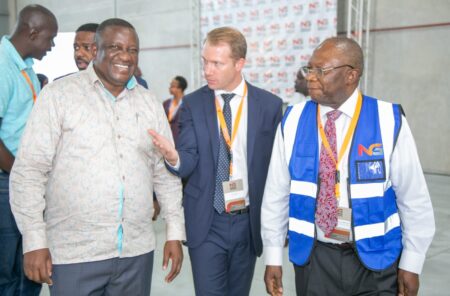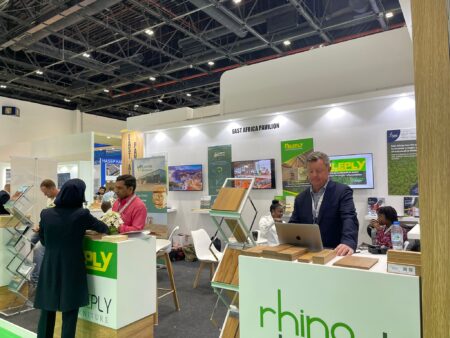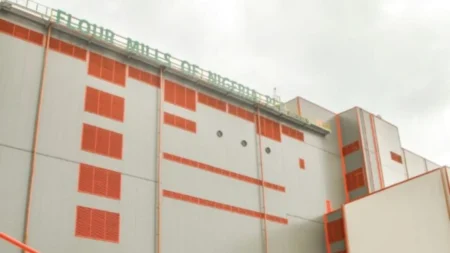- Tullow’s 2023 operating revenue surpasses expectations with strengthened Group financial position through a cut in debt.
- British firm has secured long-term capital through a $400 million debt from Glencore Energy.
- Explorer is projecting a $800 million free cash flow from 2023–2025 and a sustainable revenue flow outlook thereafter.
British exploration firm, Tullow Oil, has singled out Kenya oil project as one of its key areas in production growth for 2024, as it expects to deliver $800 million in operating revenue from 2023 to 2025.
This is captured in its financial results for 2023, where Tullow reiterated the delivery of its plan, which is achieving targeted results and a much-improved business. During the year, Tullow continued to evolve and built a strong and unique foundation to create material value, the company reported.
Several significant milestones were achieved in 2023, including the start-up of Jubilee South East which has given Ghana’s upstream sector boost, as Tullow delivered material production growth.
Tullow generated $170 million of free cash flow, ahead of expectations, and reduced net debt by over $250 million. Tullow also demonstrated its ability to access long-term funding through the $400 million debt financing agreement with the United Kingdom’s Glencore Energy.
It reiterated that it is on track to deliver production growth in 2024 and expects to deliver $800 million in operating revenue between 2023 and 2025. This outlook puts the company on a solid footing to consider growth.
Kenya oil project remains a material option
The Full-Year Results statement and presentation show that Kenya Oil Project remains a material option to drive value and growth for Tullow Plc.
Last year, Tullow’s contingent resource in Kenya doubled to 470 million stock tank barrels (mmstb), with Tullow now holding 100 per cent of the licence and a Field Development Plan (FDP) under discussion with authorities in Kenya government.
The increased interest provides Tullow with greater strategic flexibility, according to management, as it seeks partners in delivering Kenya Oil Project.
Read also: Inside Kenya-Uganda oil impasse: Is Kenya revenging the Tanzania pipeline?
Tullow updated Field Development Plan (FDP) for Kenya
According to Tullow Kenya BV (TKBV) Managing Director Madhan Srinivasan, an updated Field Development Plan (FDP) to develop 470 million barrels of oil equivalent per day resources to produce up to 120,000 barrels of oil per day, was submitted to the government in March 2023.
The firm, which plans to invest more than $10 million in Kenya this year, he disclosed, had received formal notification early this month from the Energy and Petroleum Regulatory Authority (EPRA) extending the review period of the updated Field Development Plan (FDP) to 30 June 2024.
While progressing the FDP, TKBV Tullow, Madhan added, is also actively working with the government of Kenya to develop options to accelerate production and cash flow to unlock value from the local asset.
These options, he said, are being explored with the government and will supplement Tullow’s Full Field Development (FFD) plan for Project Oil Kenya.
“We are collaboratively working with the government of Kenya as they evaluate the FDP. Once their evaluation is concluded, the FDP will be submitted to the Cabinet Secretary for Energy and Petroleum for review before submission to Parliament for final approval,” Madhan noted.
“The development has been designed to be robust at lower oil prices, and we continue discussions with prospective strategic partners for this project,” he added.
Significant achievements
Tullow Oil plc Chief Executive Officer Rahul Dhir described 2023 as a year of significant achievements and highlighted the firm’s transformation in the past few years.
“Soon after I joined Tullow in July 2020, we implemented a plan to transform our business. This plan is achieving targeted results, and since the end of 2020, we have generated over $1.1 billion of free cash flow, reduced net debt by over 30 per cent and taken the business from peak gearing of three times to 1.4 times net debt to EBITDAX,” Dhir said.
He said in line with Tullow’s strategy, it continues to focus relentlessly on operational excellence, capital efficiency and investments to drive growth.
The strategy is delivering material cash flow generation, which Dhir said Tullow is on track to deliver its target of $800 million free cash flow by 2025.
“Given the quality of our resource base, the opportunity set ahead of us and a reducing cost outlook, we expect to maintain these levels of free cash flow generation in subsequent years,” Dhir said.
“With a strong balance sheet and this sustainable free cash flow outlook, Tullow has a strong and unique foundation to create material value for our investors, host nations and stakeholders, and we confidently look to the future,” he added.
The assessment by government includes whether Kenya is interested in pursuing or dropping the Turkana oil project.
Read also: Kenya exports first crude oil
Field Development Plan for Kenya Oil Project
Meanwhile, Tullow is optimistic the Kenyan government will approve the Field Development Plan, and that it will secure partners in delivering Kenya Oil Project.
If the project goes ahead, then the government will have to give its input on how Kenya’s crude will be handled by the investors.
This includes the planned construction of the 852km Lokichar-Lamu pipeline for transporting crude oil from the Turkana oil fields in the Northern parts of the country to the shores of Indian Ocean in Lamu (Lamu port), for export.
Tullow recently said the Group has identified uncertainties in respect to the ability to realise the estimated VIU; or the present value of the future cash flows expected to be derived from its assets, but latest developments indicate it is focused on growth.
The firm is currently seeking strategic partners in Kenya Oil Project after the withdrawal of Africa Oil Corporation and Total Energies.
The two gave notice of their respective withdrawal from the Blocks 10BA, 10BB and 13T Production Sharing Contracts and the Joint Operating Agreements, effective 30 June 2023. They cited “differing internal strategic objectives.”
Read also: Kenya seeks private sector backing for oil dream
Increased risks around project financing
Due to the binary nature of these uncertainties, the Group was unable to either adjust the cash flows or discount rate appropriately.
It has therefore used its judgement and assessed a probability of achieving FID and therefore the recognition of commercial reserves.
According to Tullow, certain risks have increased since December 2022, predominantly around farm down and project financing. This has been partially offset by an increased equity interest in the project.
Based on this, the Net Present Value was revised to $246.7 million and an impairment of $9.1 million was recognised as at June 30, 2023. Net present value is used to determine whether or not an investment, project, or business will be profitable down the line.
Discussions with the Kenyan government on approval of the Field Development Plan (FDP) commenced in January 2022, after submissions had been made in December the prior year. An updated FDP was submitted on March 3, 2023 for review.
Indian Oil Company, ONGC Videsh Limited (OVL) is among those reported to be interested in taking up a stake in the British firm’s Kenyan assets. ONGC Videsh is reported to be seeking clarity before making an investment decision.
Whilst the process has taken longer than expected, Tullow remains focused on securing a strategic partnership, management affirmed.
Failure to secure a strategic partner would, however, impact on its ability to progress the Kenya project to final investment decision and unlock value, the firm’s leadership noted.
Kenya’s Energy and Petroleum Cabinet Secretary Davis Chirchir last year indicated that the government was keen to help Tullow secure strategic investors, with talks in place with Chinese and Indian investors into putting capital in the project.
Commercial viability extraction phase will see Kenya extract and export a minimum of 120,000 barrels of crude oil to both regional and global refineries.
Local refinery in Kenya remains a dream
This, as Kenya fully turns its defunct oil refinery in the coastal city of Mombasa into a storage center for imported products, meaning it will not refine its own crude.
The country’s petroleum products distributor, Kenya Pipeline Company (KPC), has taken over the refinery and is using it for storage of imported super petrol, diesel, kerosene and the latest now being development of a bulk LPG (cooking gas) reserve.
The Kenya Petroleum Refineries Limited was originally set up by Shell and the British Petroleum Company BP to serve the East African region in the supply of a wide variety of oil products. The company was incorporated in 1960, under the name East African Oil Refineries Limited.
The first refinery complex which has distillation, hydrotreating, catalytic reforming, and bitumen production units was commissioned in 1963. The second refinery train was commissioned in 1974 and also has distillation, hydrotreating, and reforming units.
At the time of its establishment, in 1959, it was under a colonial agreement with ‘consolidated’ 50 per cent Shell and 50 per cent BP, before it became the East African Oil Refineries Limited. Esso and Caltex would then become shareholders in 1963.
The Kenyan government later acquired a 50 per cent stake in 1971, amid expansions including commissioning of its second complex. In 1983, it changed to Kenya Petroleum Refinery Limited. Esso sold their shares in 1997.
In 2009, Essar again acquired a 50 per cent stake from Shell, BP and Chevron before finally bowing out in 2016, as the Kenyan government fully took over KPRL.
The refinery, however, did not last long after the full government acquisition as it collapsed in 2012-2013 following a financial crisis after debts owed to it by oil marketers rose to over $30 million.
Read also: Kenya Abandons Dream to Revive Defunct Oil Refinery











